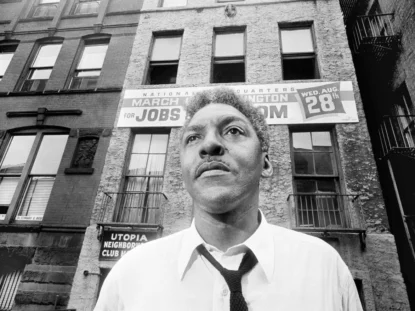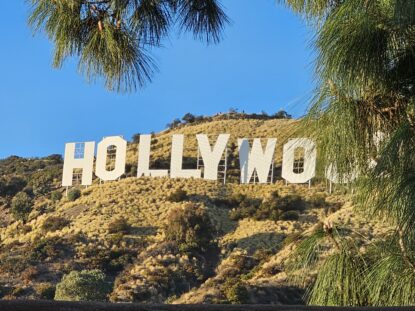Poet, radical, Beat generation godfather, and hipster gay icon, Allen Ginsberg was also an ardent lover of New York City’s East Village. Though often “on the road” (e.g., being deported from Cuba, and getting tossed out of Czechoslovakia for being a an “immoral menace”), Ginsberg called the East Village home for the better part of 40 years, feeding off of its already alternative energy, and helping to shape it into the trendy left-leaning enclave it became from the 1950s to the 1990s.
Born in New Jersey in 1926, Ginsberg attended Columbia University before moving to the East Village in 1952, living until the following year at 206 East 7th Street (between Avenues B and C) with roommates Gregory Corso and William Burroughs (who apparently began writing Naked Lunch here). This was where Ginsberg shot many photographs of Burroughs and Jack Kerouac, including the classic fire escape shot of the latter. After a few important years in San Francisco, Ginsberg returned to the East Village, setting up camp with lover Peter Orlovsky at 170 East 2nd Street (between Avenues A and B) from 1958 to ’61. Here he wrote Kaddish (considered one of his best works) and hosted at least one early and seminal drug-fueled psychedelic party when Timothy Leary paid a visit. In the late ’60s/early ’70s Ginsberg lived at 408 East 10th Street (between Avenues C and D), then in 1975, moved to 437 East 12th Street (between First Avenue and Avenue A), where he lived for most of the rest of his life. A few blocks away, Ginsberg was a witness to the 1988 police riot in Tompkins Square Park, which fittingly, two decades later, is now the site of the Howl! Festival, named for Ginsberg’s most famous work.
Having early on been filled with “whole mountains of homosexuality” (as he put it in Kaddish), Ginsberg lived his life openly and freely in a pre-Stonewall era when few dared to do so, and was among other things the first Who’s Who entrant to list a same-sex partner. He died in his beloved East Village on April 5, 1997. “The young people who moved to this neighborhood two years ago don’t know what Ginsberg has done for it,” Orlovsky told the New York Times soon after.
For a fabulous collection of Ginsberg’s photographic work, see Smithsonian Magazine‘s Allen Ginsberg’s Beat Family Album. For a veritable treasure trove of Ginsberg material in a variety of media, see his estate’s official site at allenginsberg.org.







